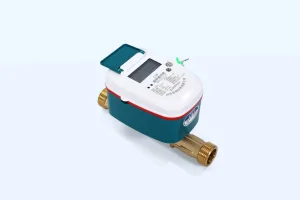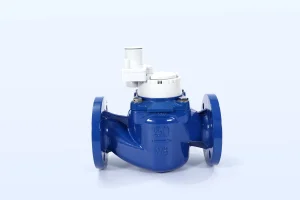
A smart water meter is an updated type of regular water meter. It measures water use and sends that data through digital means. Regular mechanical water meters use turning parts to track water flow. But smart meters use better sensors and ways to talk to each other. They give more exact checks and updates right away.
A water meter is a tool that keeps track of water flow. It measures the amount of water that goes through a pipe. It works under normal conditions. It also stores and shows that info. These smart tools fit into bigger smart setups. They help manage water in homes, businesses, or city systems.
Smart metering tools rely on two main techs. One is LoRaWAN for talking to devices. The other is ultrasonic sensors for exact checks.
LoRaWAN stands for Long Range Wide Area Network. It lets low-energy devices send messages far away. They use very little data. This fits well for water companies. They need to watch many meters in cities or out in the country. The system allows safe two-way talks. So, it collects data. It also lets workers change settings from afar. They can check for problems too.
Ultrasonic tech works on the time-of-flight idea. It figures out flow speed by timing how long sound waves take to go upstream and downstream.
The ultrasonic water meter is a good electronic flow tool. It uses the ultrasonic time-of-flight method. It finds flow speed by checking the time gap of sound waves in the water.
This way skips moving parts. So, it cuts down on breakdowns. It boosts how long it lasts. That makes it great for exact jobs. Think leak finding or slow water flows.
Moving from old mechanical meters to smart ones brings lots of good points. It helps water companies a lot. But it also aids everyday users like you.
Old mechanical meters have trouble with exact reads at slow or changing flows. That’s because they need parts to move. But smart ones do better. Here’s why:
They hit high accuracy: ±1% to ±2% error. That’s sharper than mechanical ones, which run ±2% to ±5%.
This exact level means you only pay for what you really use. It also helps companies bill right.
The Ultrasonic Water Meter-DN32 shines in slow flow spots. It has a wide range for flows (100:1 to 400:1). So, it works for homes or factories.
It finds flow speed by timing sound waves in the water. There’s no moving parts. That gives top exactness. It also lasts longer.
Its no-pressure-drop setup keeps your pipes working smooth. No extra blocks in the flow.
A big change with smart meters is getting use data right now. You can check it from afar. Use cloud sites or phone apps. This helps make quick choices. Maybe cut home use. Or watch a whole building’s water pattern.

The LoRaWAN Water Meter DN50 handles far-off talks well. It uses little energy.
Smart perks: Read from afar. Watch for leaks. Manage data in the cloud.
This fits easy into IoT setups. No need for often battery swaps. Or extra signal helpers.
Ongoing checks spot leaks early. Often before you see them or they hurt much. By looking at use over days, odd spots pop up fast.
Smart perks: Read from afar. Leak watch. These cut waste for companies and folks.
Leaks in ground pipes or home lines hide easy with old meters. Smart setups catch small changes from normal use. So, fixes happen soon. That saves water. It’s key for the earth and fair pays.
Smart meters cut the need for hand checks. That drops worker costs. It also trims mistakes in bills.
Exact checks make each bit of water count. That’s big for green reasons. And for right billing.
By auto-reading meters and linking to bill systems, companies smooth work. They give clear services to users like you.
Cities move to smarter setups now. So, fitting in matters. Smart water meters build with easy add-ons. They link to power watchers, trash trackers, and city tools. They use set ways like LoRaWAN or NB-IoT.
Smart metering has many upsides. But you should know the downs too.
Setting up smart meters costs more at first. That covers gear, software, and network parts. It’s higher than plain mechanical ones. But over time, savings from better work pay it back.
Any linked tool risks bad access. Safe code locks are key. But they need updates all the time. Makers and water teams share that job.
For LoRaWAN tools like DN50, steady net reach is a must. In far spots with weak setups, link problems slow real-time sends. Unless you add more gates.
Smart meters wear less than old ones. No moving bits. But tough spots still test them.
Ingress Protection (IP) Rating: IP68 blocks dust and long water dips. But hot colds or eat-away airs might hurt over years. Plan installs right to dodge that.
If you want solid smart metering tools from pros, check Shandong Chen Shuo. They focus on smart water tech. Based in Linyi City’s Xiao’anzi Industrial Park. For years, they build new ideas in flow checks and talk modules. They serve mid-factory needs. Also home uses around the world.
Their items go from small home DN15 to big factory DN200. Each one gets careful build. Down to tiny parts. They use tough stuff for hard work.
Made for mid-to-big pipes (DN50-DN200), this one has:
Far wireless sends
Low energy use
Reads right now from afar
Easy cloud links
Best for city water lines. Watch big areas from one spot. No worry on battery or signals.
Built for small pipes (DN15–DN40), this has:
No moving setup for steady work
High Accuracy: ±1% to ±2%
Good at slow flows like home taps
No Pressure Loss to keep flow easy
For apartment blocks or old factory updates, it works great. In many spots. No often tweaks needed. Thanks to strong inside parts. Sealed in IP68 case.
Pick a tool that fits your job just right.
Wrong pipe size means bad reads or breaks.
Match meter size (like DN32 vs DN50) to your pipe. Check if your spot has good net if wireless. Think on weather like heat or wet risks. Pick types for electric or other needs.
Pick LoRaWAN when you need control over spread-out stuff. Go ultrasonic for exact flows that change. Key in spots hard to fix. Or where no flow blocks allowed.
Q: What makes ultrasonic water meters more accurate than mechanical ones?
A: Ultrasonic ones skip moving parts. They use time-of-flight tech. That gives better reads at slow flows. Mechanical need wheel turns. Those wear out over time.
Q: Can I install a smart water meter if my area has poor network coverage?
A: Yes. But for LoRaWAN like DN50, get gates close by. Or pick ones that save reads local till link back. Or try no-wire for now.
Q: How long do these smart meters typically last?
A: Tough builds with no moves let them go over 15 years. If you set them up right and keep conditions good.